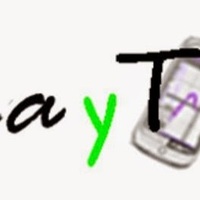Carmen y Nayra
Universidad Complutense de Madrid, Educación, Graduate Student
Flow cytometric analysis of T cells from HIV+ and normal individuals activated for 15 hr showed that the percentage of cells producing interferon-γ (INFγ) was enhanced approximately threefold (39 compared to 14%) in the HIV+ CD8+... more
Flow cytometric analysis of T cells from HIV+ and normal individuals activated for 15 hr showed that the percentage of cells producing interferon-γ (INFγ) was enhanced approximately threefold (39 compared to 14%) in the HIV+ CD8+ population. Activation modes, other than anti-CD3 with PMA, were ineffective, and in no case did the percentage of HIV+ CD4+ T cells show increased INFγ production over controls. Enhanced INFγ production was not induced by either anti-CD3 or PMA alone, or anti-CD3 or ConA with anti-CD28, or enhanced by N-acetylcysteine. In contrast to INFγ production, the percentage of CD4+ T cells producing interleukin-2 (Il-2) greatly exceeded that of the CD8+ T cells. The results from flow cytometry analyses of HIV+ CD8+ T cells was supported by quantitative analysis of INFγ mRNA (by PCR) and INFγ secretion by ELISA. These methods showed a sixfold and three- to fivefold increase, respectively, on a per cell basis. As HIV infection progresses, as shown by loss of CD4+ T cells, the proportion of CD8+ CD28− T cells increases, and it is this T cell subset that is responsible for 80% or more of the enhanced INFγ production. The enhanced INFγ in HIV+ patients derives from two factors: the increase in CD8+ CD28− cells to 70% and the percentage producing INFγ (60%, compared to 21% for CD8+ CD28+ cells). Our findings of a substantial increase in INFγ production in HIV infection arising from the increased number of CD8+ CD28− T cells are compatible with clinical studies which show elevated INFγ in HIV+ serum and INFγ producing CD8+ T cells dominating HIV+ lymph nodes. We also found a significantly decreased proliferative response of the HIV+-derived CD8+ T cell fraction with coactivator anti-CD-28, in contrast to PMA (with anti-CD3), which is probably a reflection of the diminished population of CD8+ CD28+ T cells in HIV+ donors compared to normal donors (30.7 compared to 67.9%).
